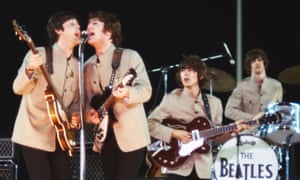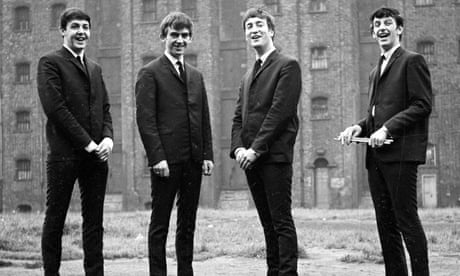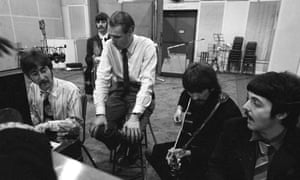Blink and you’ll miss it, but Ron Howard’s intensely enjoyable documentary about the Beatles’ touring years has a great surreal moment at the very beginning. The moptops are getting out of the plane in New York, on their way to a date with destiny on The Ed Sullivan Show, and the newsreel camera briefly catches a couple of placards held up in the huge airport crowd. “Beatles Unfair 2 Bald Men” reads one, and another says: “England Get Out of Ireland.” The images vanish, and their atypical sentiments are in any case drowned by the global scream of unironic adulation. Yet both echo other undercurrents in Beatlemania: a fear of these weirdly attractive aliens, a hatred of youth culture and youth itself, and perhaps mixed feelings in New York and the US about this extraordinary new British invasion. Maybe Paul McCartney even saw that second placard and modified it as a song title for Wings.
Is there really anything more to say about the Beatles? Well, Howard gives us a movie conceived on similar lines to his non-fiction features such as Apollo 13 or Frost/Nixon, real people tested in the fire of publicity, with the same classic narrative arc of personal growth. Yet he persuades you that there might be something new to say, in a film that includes interviews with the two surviving members McCartney and Ringo Starr, archive material with Harrison and Lennon, and intriguing conversations with present-day fans such as Elvis Costello, Whoopi Goldberg and Malcolm Gladwell (whose 2008 book Outliers brings the Beatles’ Hamburg years into his theory that greatness takes 10,000 hours of practice).
Howard’s film has a different emphasis from, say, Ian MacDonald’s critical classic Revolution in the Head, which was explicitly about the Beatles’ recordings. This is about the Beatles as live phenomenon, and the fact that their music was all the more remarkable because it had to be heard above the scream – that ambient sound of sex, excitement and modernity, mixed in with a thin chirrup of press envy. The scream was an important part of it. There are many familiar scenes of the Beatles being unsure, in venues such as Shea Stadium, as to whether they could even be heard at all. And the film demonstrates that the sound system, such as it was, was just the stadium’s PA speakers. What the fans heard was a thin and tinny travesty. But that was hardly the point.

Can you hear us? … the Shea stadium concert. Photograph: SubaFilms
 Eight Days A Week: how Ron Howard brought the Beatles back to life
Eight Days A Week: how Ron Howard brought the Beatles back to life Eight Days a Week is about what amounted to an almost unbroken four-year, semi-improvised multimedia performance for which there was no pre-existing template – not simply the music but the giant public spectacle and public scrutiny, the theatre of arriving at airports, hotels, posing for incessant photographs, and most challengingly of all, talking to journalists. With wit and good humour far in advance of anything being shown by the press corps, the Beatles came up with snappy but good-natured replies to the questions. Eddie Izzard interestingly comments on their style. All too clearly, with pointed questions about how long the group expected all this to go on, the press was waiting for a comeuppance. Eventually it came, with John Lennon’s remarks about the Beatles being bigger than Christianity. Not in the US Bible belt they weren’t. (A more accurate blasphemy would be to say they were bigger than Shakespeare.) The row soured the exhausted Beatles’ already darkening mood and it was time to quit touring.

With George Martin at Abbey Road studios. Photograph: Apple Corps
In an age before social media, the Beatles could do and say almost anything they wanted to without it rebounding. A wave of euphoria and happiness pours from the screen, and Howard’s movie surfs that wave. If there is a flaw in the film, it is that it somehow fails to notice the Beatles’ wives. Three of them were married or got married in this period, and Linda Eastman met Paul towards the end of this time. Surely their domestic lives were part of what complicated their brotherhood and made their eternal boyhood on the road untenable. There is a lot of simple, moment-by-moment pleasure to be had here. Howard dishes up familiar archive footage but new material as well: in particular, their final performance in Candlestick Park, San Francisco. The Beatles’ cherubic faces are strangely compelling: they did indeed look like intergalactic creatures who found a home on our planet

No comments:
Post a Comment